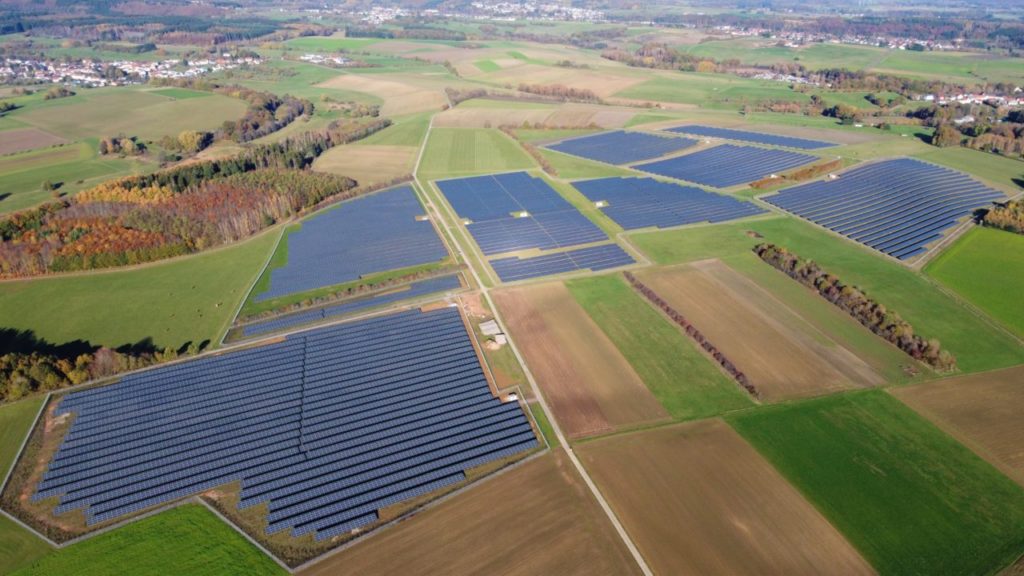
Germany commissioned more than one million new solar power projects in 2023, with a combined electricity generation capacity of 14.1GW to meet 12% of Germany’s total energy demand, according to German solar association Bundesverband Solarwirtschaft (BSW).
The BSW announced the installation figures earlier this month, and has since gone on to note that these totals are a record for the German solar sector, and exceed the government’s target of 9GW of new solar installations in 2023.
Unlock unlimited access for 12 whole months of distinctive global analysis
Photovoltaics International is now included.
- Regular insight and analysis of the industry’s biggest developments
- In-depth interviews with the industry’s leading figures
- Unlimited digital access to the PV Tech Power journal catalogue
- Unlimited digital access to the Photovoltaics International journal catalogue
- Access to more than 1,000 technical papers
- Discounts on Solar Media’s portfolio of events, in-person and virtual
The BSW also noted that this was an 85% increase on the 7.5GW of new capacity installed in 2022, and marks the tenth consecutive year of greater capacity additions in the global solar sector, dating back to 2014.
This decade of sustained growth has pushed Germany’s total installed solar capacity to 79.2GW as of the end of 2023, according to Fraunhofer ISE. The BSW estimates that this figure is, in fact, 81.5GW, but both figures demonstrate that solar now has the largest generation capacity of any single power source, ahead of wind, with a combined capacity of 68.8GW; coal, with a combined capacity of 37.5GW; and natural gas, with an installed capacity of 34.8GW.
“Although it is perhaps too early to make reliable predictions for 2024, numerous indications suggest that the amount of PV capacity that will be connected to the grid during this year will be more rather than less than what was installed in 2023,” wrote the BSW in its announcement of the news. “We can therefore expect the interim target of 13GW set out by the German government for 2024 to be exceeded.”
Keeping pace with Europe
Last week, Philip Wolfe of Wiki-Solar wrote for PV Tech that, by the end of 2023, Germany had installed the fifth-most utility-scale solar capacity in the world, and the BSW estimates that, by the end of the year, solar PV met 12% of Germany’s total energy demand. This figure compares favourably to the contribution of solar to the energy mixes of other European countries, with solar meeting 14% of Spain’s energy demand in 2023, and 4.2% of France’s energy demand in 2022.
The news is also a positive development for the German solar sector more broadly, which met 68% of the country’s energy demand in July last year as sunlight hours peaked. The German solar sector saw its annual capacity installations collapse from 8.1GW in 2012 to just 2.6GW in 2013 with the withdrawal of government subsidies, and suggests that the solar sector has managed to achieve sustained growth without such support.
However, the BSW also claims that the German government has contributed to “fuelling public speculation and contributing to investment uncertainty” in the country’s solar sector, after last December’s announcement of government cuts to the solar sector to account for a shortfall in the national budget of €60 billion ($64 billion).
While the government has not yet specified the extent of the cuts to the solar sector in particular, these concerns will do little to alleviate a perceived lack of financial viability in the European solar sector in general, and the manufacturing industry in particular.
Our publisher Solar Media is hosting the 11th Solar Finance & Investment Europe conference, 31 January – 1 February at Park Plaza in London. Discussion topics will include renewable capital allocation, scaling European solar and maximising returns for solar-plus-storage projects. See the official site for more details.







